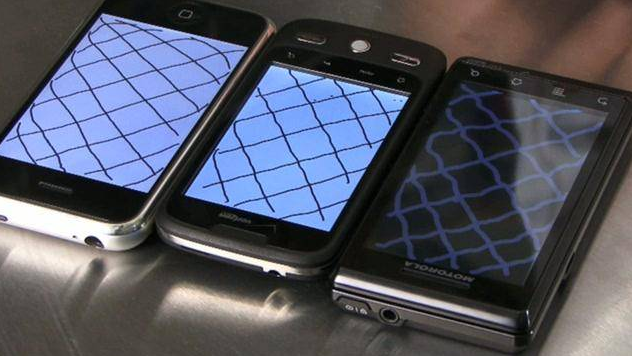Is the iPhone touchscreen more accurate than Android? Study says yes

The Apple iPhone bested its Android competitors when it comes to tracking and accuracy on its touchscreen, according to a new study.
According to analysis by the MOTO Development Group, a company that offers products and services for startups, the iPhone has better integration of software and screen than the Motorola Droid, Google (HTC) Nexus One or HTC Droid Eris.
In a test, MOTO conducted a line touch test on each handset -- seeing how smooth and straight lines are when drawn slowly with a finger.
MOTO writes:
Why do you need to draw slowly? On a good touchscreen, users can draw clean straight lines, even while going very slowly, so the graphics that appear on screen accurately represent what was physically drawn.
On inferior touchscreens, it’s basically impossible to draw straight lines. Instead, the lines look jagged or zig-zag, no matter how slowly you go, because the sensor size is too big, the touch-sampling rate is too low, and/or the algorithms that convert gestures into images are too non-linear to faithfully represent user inputs.
According to the results, the iPhone was the best of the bunch, both with light pressure and moderate pressure. All three Android phones showed hints of poor finger tracking, MOTO found, less evident with more pressure.
The iPhone did have one major drawback, however: sensitivity fell off near the edges of its screen, especially along the bottom edge. In the edge test, the Nexus One was king, with the Droid Eris a close second.
Here's a video of the test:
In my experience, I've found the iPhone's screen to be much more accurate when it came to placing my touch inputs -- I've experienced a degree of frustration with the Motorola Droid, particularly on mobile websites not designed for a touch interface.
What have you found with your touchscreen device? Do you agree with the results?
